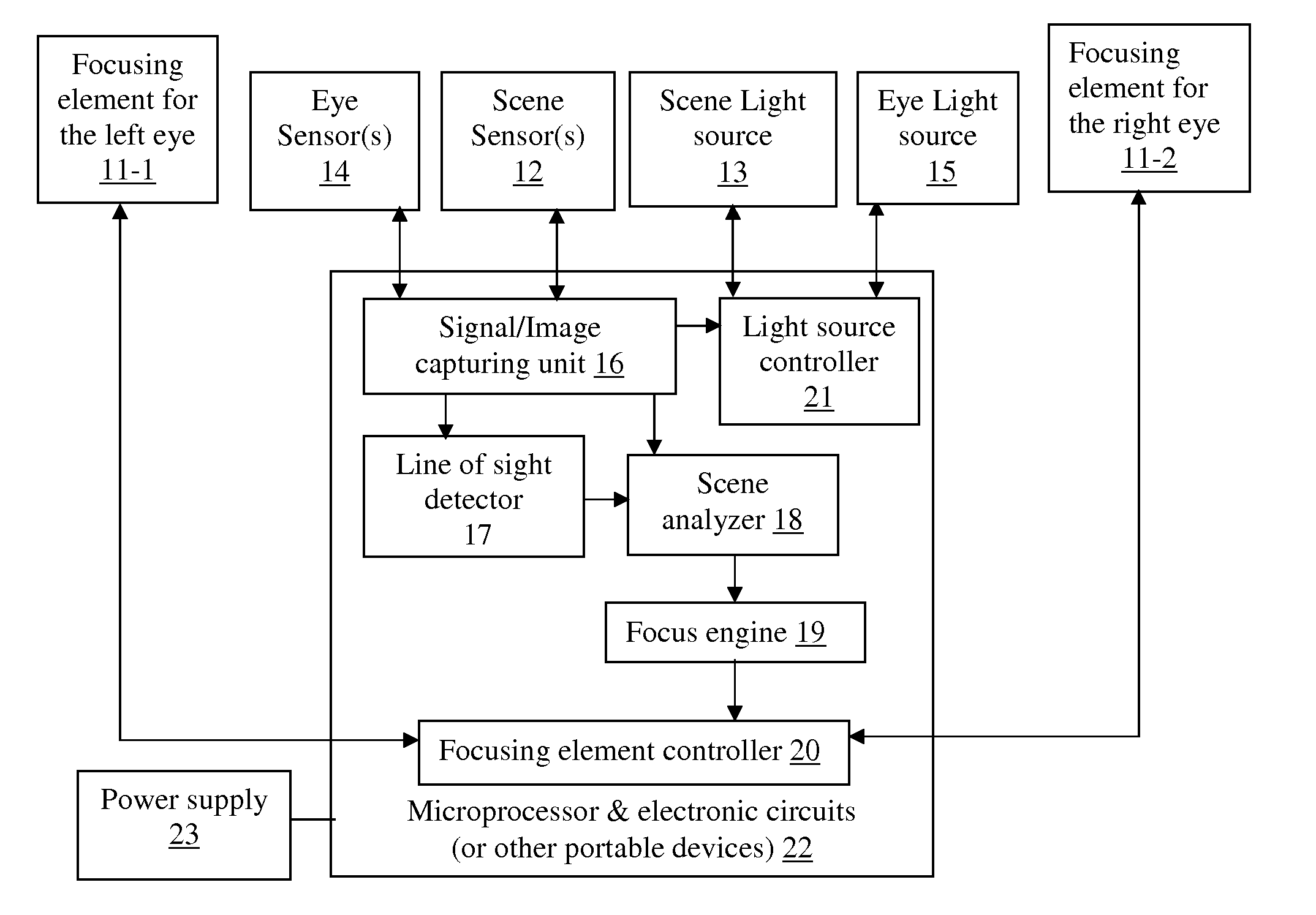Automatic accommodative spectacles using a scene analyzer and focusing elements
a technology of scene analyzer and focusing element, applied in the field of automatic accommodative spectacles, can solve the problems of only being implanted in the patient's eye after a-iol, unifocal correction devices cannot adapt to such changes, and patients' refractive errors can change overtime, so as to improve the location of the patient's fixation roi
- Summary
- Abstract
- Description
- Claims
- Application Information
AI Technical Summary
Benefits of technology
Problems solved by technology
Method used
Image
Examples
Embodiment Construction
[0019]A co-pending U.S. patent application by the same inventors, U.S. patent application Ser. No. 12 / 916,508, filed Oct. 30, 2010, is herein incorporated by reference in its entirety. This co-pending application describes automatic accommodative spectacles that use sensors to monitor the patient's lines of sight to determine his / her fixation ROI. In real-time, the associated necessary optical power adjustments are estimated, and focusing elements are adjusted accordingly. This method is adequate for the majority of the patients whose two eyes can align properly and the lines of sight of both eyes can be monitored. However, for patients whose two eyes cannot properly align with each other due to strabismus or other ocular conditions, or patients whose two lines of sight cannot be detected properly at the same time, an alternative approach is needed.
[0020]The present disclosure describes a spectacle device that automatically focuses on the fixation ROI of the patient (user) using sce...
PUM
 Login to View More
Login to View More Abstract
Description
Claims
Application Information
 Login to View More
Login to View More - R&D
- Intellectual Property
- Life Sciences
- Materials
- Tech Scout
- Unparalleled Data Quality
- Higher Quality Content
- 60% Fewer Hallucinations
Browse by: Latest US Patents, China's latest patents, Technical Efficacy Thesaurus, Application Domain, Technology Topic, Popular Technical Reports.
© 2025 PatSnap. All rights reserved.Legal|Privacy policy|Modern Slavery Act Transparency Statement|Sitemap|About US| Contact US: help@patsnap.com



